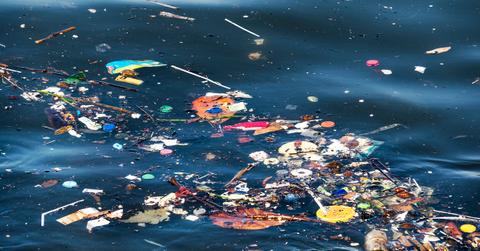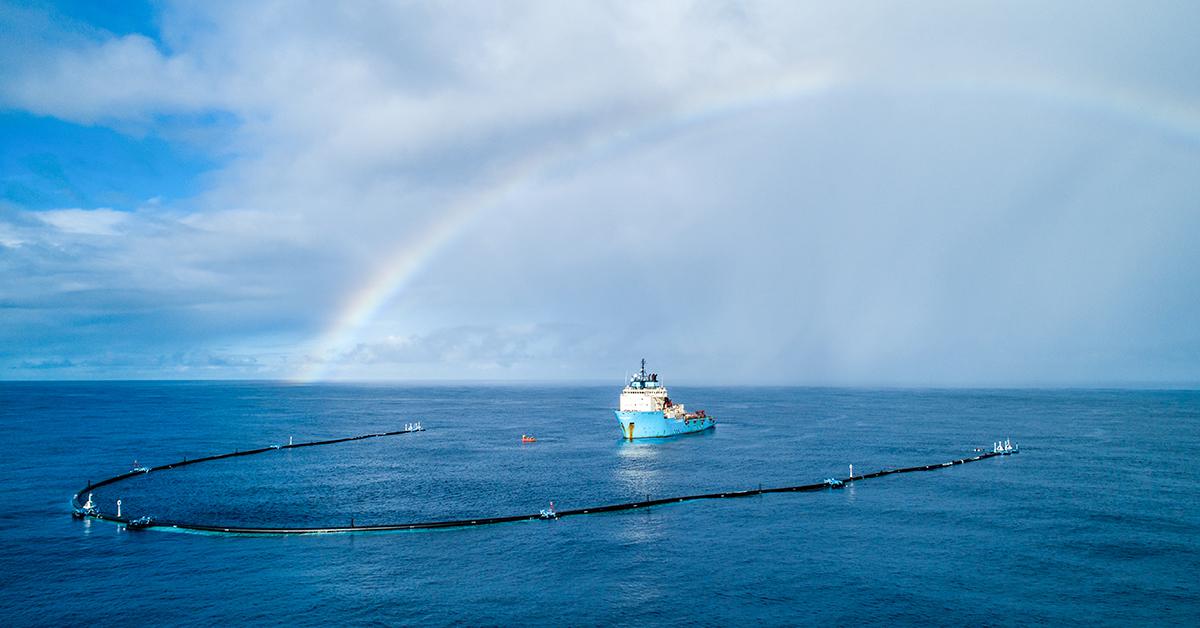What Is the Great Pacific Garbage Patch?
Updated July 21 2020, 11:55 a.m. ET

It can be easy to forget about pollution and landfills, so long as you don’t see it up close every day. You throw something out and then essentially, it disappears from your life. But just because it’s “gone” from your life doesn’t mean it’s truly gone; it still has to go somewhere, and the Great Pacific Garbage Patch is the worst proof of that. Also known as the Pacific trash vortex, the Great Pacific Garbage Patch is a visual representation of where garbage can end up after it’s trashed.
The Patch is the result of a gyre (a large system of ocean currents) and is actually believed to be two seperate patches — the “Eastern Garbage Patch,” which is found between Hawaii and California, and the “Western Garbage Patch,” which goes eastward from Japan to outer Hawaiian islands; the two separate patches are then connected by a 6,000-mile long ocean vortex.
What is the Great Pacific Garbage Patch?
The Great Pacific Garbage Patch is a concentration of marine debris in the North Pacific Ocean — the exact size and mass of which is unknown and difficult to measure. It is formed by trash and trash particles that found their way into the North Pacific Ocean and is the world’s largest collection of plastic in an ocean.
According to the National Ocean Service, its name “has led many to believe that this area is a large and continuous patch of easily visible marine debris items such as bottles and other litter — akin to a literal island of trash that should be visible with satellite or aerial photographs.” The NOS adds, “…much of the debris is actually small pieces of floating plastic that are not immediately evident to the naked eye.”
The Great Pacific Garbage Patch is thought to be mostly made up by thrown-away fishing nets — with fishing nets accounting for half the garbage. Scientists also estimate that 20 percent of the Great Pacific Garbage Patch’s volume of garbage is from the tsunami in Japan in 2011.
Made up of 80,000 metric tons of garbage, some estimate that the Great Pacific Garbage Patch is bigger than some U.S. states or even countries, but surmising the size is difficult due to the ocean’s currents and ever-changing winds.
Regardless of its potential size, the debris of the Great Pacific Garbage Patch can cause harm if ingested by various marine species. Such debris can cause an animal to choke, starve, get entangled, or pose some other life-threatening risk.
Is the Great Pacific Garbage Patch bigger than Texas?
While it is difficult to measure the exact size of the Great Pacific Garbage Patch, a three-year study published in Scientific Reports Friday — as reported by CNN — estimated the Great Pacific Garbage Patch to be 1.6 million square kilometers.
While it’s undeniable that a patch of trash floating in the ocean is enormous, this estimate is significant because it is 16 times bigger than previous estimates were. If this estimate is accurate, the Great Pacific Garbage Patch is indeed bigger than Texas. In fact, it would be twice the size of Texas.
Cool Australia reports that based on this new estimate, the Great Pacific Garbage Patch could be double the size of Queensland or even bigger than Australia.
Is the Great Pacific Garbage Patch being cleaned up?
The Great Pacific Garbage Patch is being cleaned up bit-by-bit. Boyan Slat, a 25-year-old Dutch inventor, created the Ocean Cleanup Project and a unique cleanup system to catch floating plastics without bothering the marine life below the patch. Boyan has said he believes the Ocean Cleanup Project will be able to clean up as much as half of the Great Pacific Garbage Patch’s debris.
Is the Great Pacific Garbage Patch visible from space?
Make no mistake, the Great Pacific Garbage Patch is massive, so its size is not to be downplayed. However, people often claim that it can be seen from space and that is not true.
According to National Geographic, “It cannot be seen from space, as is often claimed.”
Is the Great Pacific Garbage Patch growing?
It’s hard to say. With Slat’s Ocean Cleanup Project, some of the Great Pacific Garbage Patch is being cleaned up. However, a cleanup would not have a great impact if the behaviors that led to the garbage patch accruing in the first place don’t cease.
As of 2018, a study revealed that the Great Pacific Garbage Patch was still expanding. Authors of the study wrote at the time, “Our results suggest that ocean plastic pollution within the GPGP is increasing exponentially and at a faster rate than in surrounding waters.”
In fact, even the Ocean Cleanup Project members were stunned by the size of the patch. In an official statement made in 2018, Julia Reisser, chief scientist of The Ocean Cleanup’s expeditions said, “We were surprised by the amount of large plastic objects we encountered. We used to think most of the debris consists of small fragments, but this new analysis shines a new light on the scope of the debris.”
While cleaning up the Great Pacific Garbage Patch is crucial to restoring the health of the Pacific Ocean and its marine life, it’s also just as critical to make sure such an island of trash doesn’t ever accrue again.
